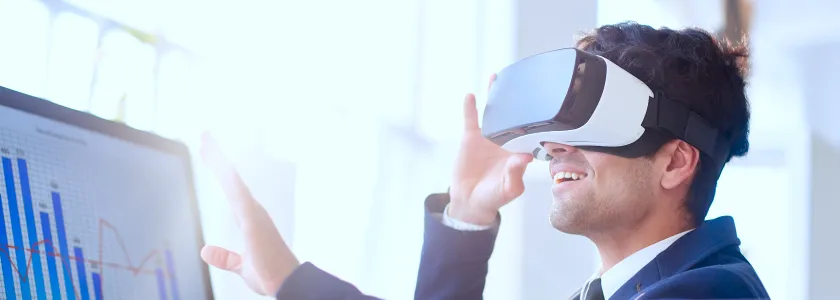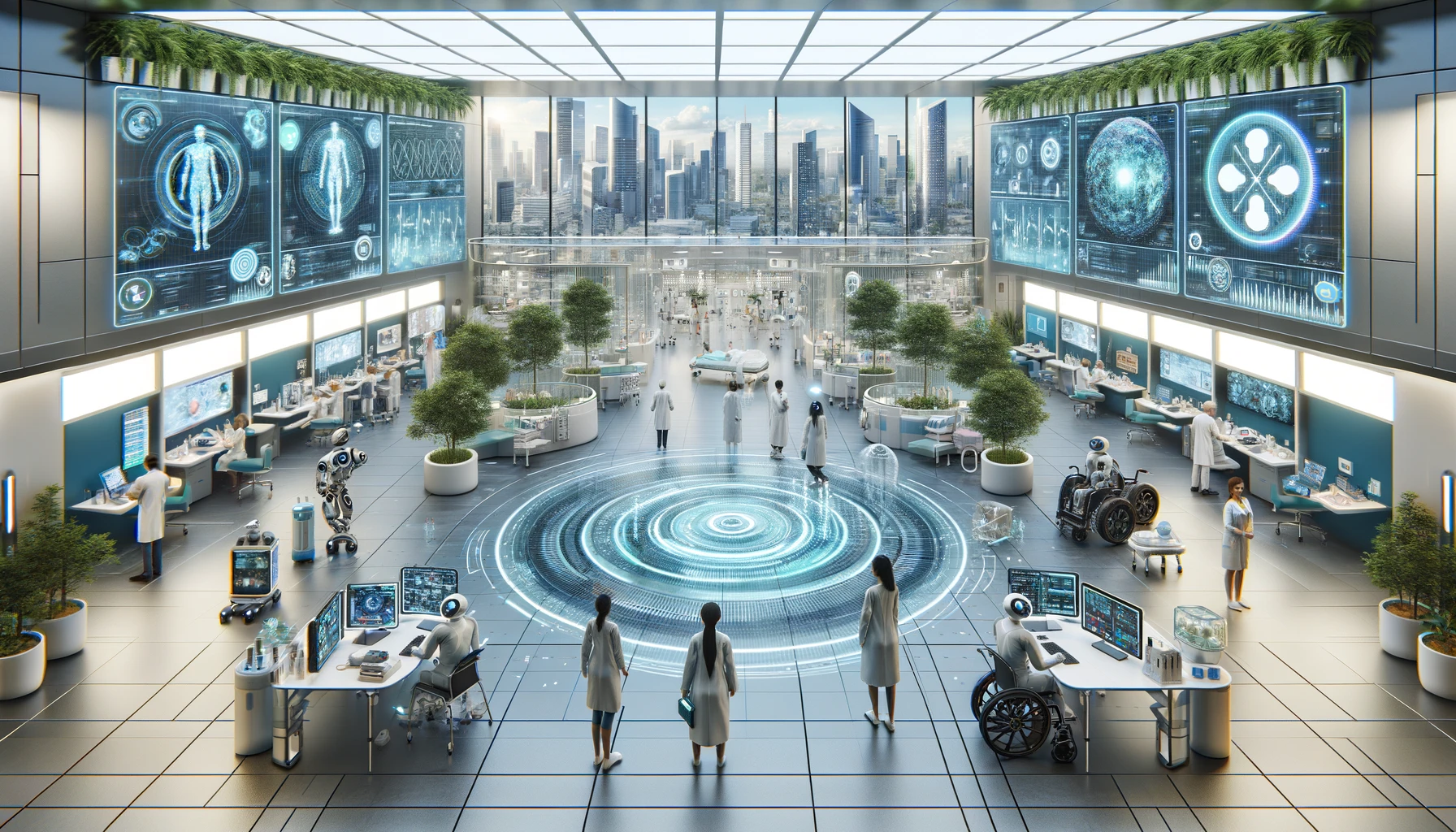One of the most interesting emerging technologies today, Augmented Reality (AR) has leaped beyond its uses in video gaming and is providing technological solutions never seen before in a variety of industries. Businesses today are using AR to visualize their workflows, increase productivity, and offer new solutions to complex problems by using real-time data. AR has truly emerged as a bridge between the physical world and the digital world, and it will contribute to the increasingly important role that technology has in our society.
How Does Augmented Reality Work?
To get a better understanding of how AR is changing the world around us, we need to first understand how this technology is even possible.
There are three different approaches to AR, all of which require sensors and a camera to thoroughly map out a location before projecting an overlay. The first way is through SLAM, or Simultaneous Localization and Mapping. Using a series of problem-solving algorithms, SLAM is great at estimating the distance between an object it’s focused on and the sensor taking in information. SLAM is also able to correct the distance of a projected image based off the movement of the AR user — improving the overall experience.
Sensors map the surrounding location on Pokemon GO, and place the images accordingly.
Another approach to AR is Recognition Based. By accessing a camera to identify key markers or objects, Recognition Based AR will then apply an image overlay that is viewable by the user. Recognition Based AR is also great at creating 3D overlays; meaning once the angle of a marker or object is changed, the overlay will make adjustments and retain the quality of the image. This approach is mostly used on mobile devices today, and if you’ve used any of Snapchat’s facial filters, that means you’ve experienced Recognition Based AR.
Key markers on a man’s face are mapped through Snapchat, and then an overlay is applied.
The last approach to AR is called Location Based, and it’s probably one that very few of us have actually thought of as AR. Location Based AR accesses the user’s GPS location, accelerometer, or velocity meter, and will measure every type of movement that is made. Based off this data, the user will then receive feedback in the form of a display. Imagine a race car driver using an AR helmet to see things like their fuel gauge, miles-per-hour, total mileage, and more — all without taking their eyes off the track. This is possible thanks to Location Based AR.
Using GPS and an accelerometer, a dynamic AR overlay is applied when driving.
AR technology, however, is more than just a series of complex algorithms and software solutions; it’s the AR-compatible devices that make these unique user experiences possible.
Devices That Make Augmented Reality Possible
When AR was first developed in 1968, it required an expensive, specialized headset to just display simple wireframe drawings. Now, AR-compatible devices are much more accessible, allowing millions of people to have the power of AR in the palm of their hands.
The most popular AR-compatible devices are mobile phones and tablets. Many of the latest iOS and Android devices are able to use their front or rear-facing cameras and GPS location services for AR capabilities. With the release of AR toolkits in 2009, an array of mobile apps have made it even easier for mobile users to experience basic AR functions.
Smart TVs, PCs, and the latest video gaming consoles can project AR overlays through their integrated cameras. This is widely popular in the video gaming world, with some games even centered around the use of AR. With improvements to graphic cards and computer processing power, this will only make the AR video gaming experience more immersive.
Perhaps the most expensive of the three devices are AR headsets and smart glasses. These types of devices are still very early in development, but some like Google Glass, Epson Moverio, and others have already hit the markets. Wearable AR devices are by far the most immersive because they allow the user to project a digital and interactive reality within their own world
Through the use of wearables and other AR-compatible devices, new solutions are made possible every day across many different industries.
Augmented Reality Use Cases in Different Industries
Disruption is inevitable as new technologies emerge; but perhaps no technology like AR has created such disruption across so many different industries.
Healthcare
According to a 2018 study by Lumus Vision, by 2025, an estimated $5.1 billion in revenue is expected to be generated by the use of AR and Virtual Reality (VR) technology in the healthcare industry, making it second to video gaming. AR will undoubtedly change the way healthcare professionals use technology to better the patient experience.
Even something as miniscule as drawing blood from a patient can be bettered through the use of AR. According to AccuVein, 40% of intravenous injections miss the patient’s vein on the first try. This isn’t just frustrating from a patient’s standpoint, but the practicing nurse as well. AccuVein, which has been used on more than 10 million patients, uses AR technology to give nurses a clearer view by projecting an overlay of the injection site. With the help of AR, AccuVein has shown that nurses are 3.5 times more likely to hit the targeted vein on the first try.
Less invasive procedures lead to better patient outcomes.
Imagine surgeons using an AR headset or smart glasses to provide even less invasive surgery by projecting a high-definition overlay where an incision is made. This is the next step towards healthcare-centered AR.
Engineering
Right below healthcare AR comes engineering, which is projected to generate up to $4.7 billion by 2025 from the use of AR and VR. The uses of AR in the fields of engineering are similar to that of healthcare, but instead of a patient, AR can be used to design everything from roads, to buildings, to bridges.
Bringing blueprints to life with real-time data.
Most engineers today are already well-versed in 3D design software, but even 3D models don’t provide the fullest picture. AR technology will immerse an engineer in their design, and give them a clearer understanding of a model’s structural integrity by using real-time data. These quick AR mockups can increase productivity and improve overall workflow.
Live Entertainment
By 2025, a projected $4.1 billion in revenue can be generated by the use of AR in the live entertainment industry. Audiences are always looking for experiences that push the boundaries of entertainment. As a matter of fact, a Harris Poll on behalf of Eventbrite surveyed over 2,000 millennial live entertainment goers and found that 72% of them would rather put their money towards new experiences than desirable objects. AR will be used to capitalize on this.
Imagine watching a live video on social media of your favorite band performing half way across the world. Obviously you couldn’t be there in attendance, but with AR technology, you’ll be able to project their performance onto your kitchen table.
AR overlays on special Coke products creates a new and refreshing user experience.
Companies can harness AR for marketing efforts as well. A recent collaboration between Coke and Spotify revealed this, when mobile users viewed their Coke product through the Blippar app and could actually treat the can as if it were an augmented jukebox.
Other industries like real estate, retail, and even the military can benefit from the uses of AR, and only time will tell what other industries will thrive from this interactive technology.
What to Expect in the Coming Years
As we enter a time where technology becomes an essential part of how our society operates, businesses across every industry should look to harness AR to not only improve their customer experiences, but internal processes as well. Within the next 5 to 10 years, AR experts see a technological revolution where operating on both the digital and physical realms will lead to hyper-production, and user experiences never seen before.





